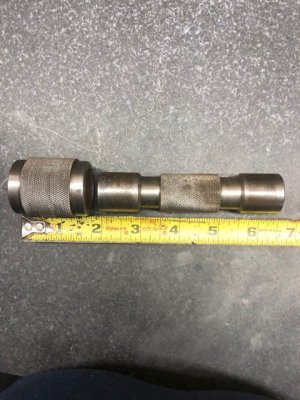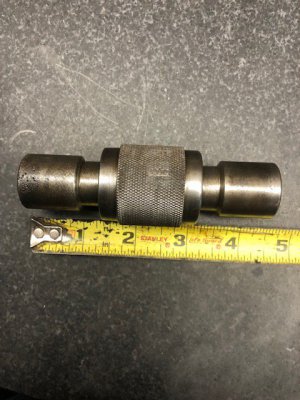- Joined
- Nov 5, 2019
- Messages
- 218
I got this item free when I bought some other items at a yard sale recently. The older gentleman didn’t know what it was and neither do I. It was turned from 1” stock and has centers on each end. The knurled sleeve slides over the main body. What is it?



